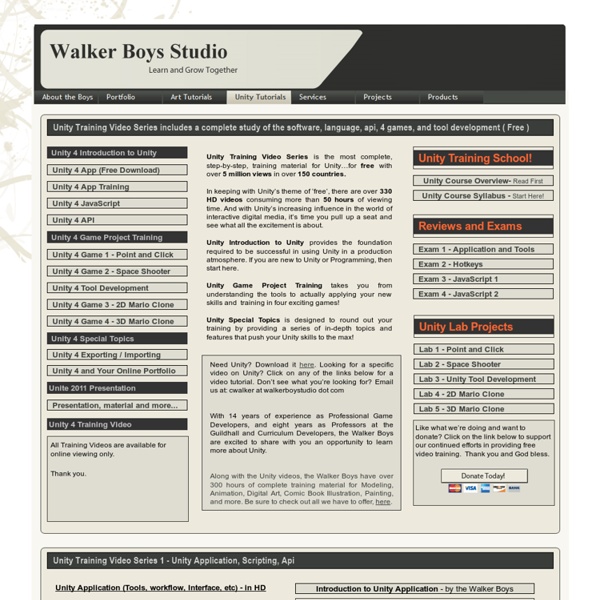



Tutorial - Quick and Easy Augmented Reality from SketchUp/3DMax etc Creating your own Augmented Reality is, thanks to ARTAG, staggeringly easy. Yet behind the simplicity lays a serious potential for both the hobbyist, local government use and the professional practice. The only requirements are a webcam, printer and the ability to export models in either .obj, .wrl or .ase formats. As such if you have a model in SketchUp, 3DMax or any other common 3D package you can now view it on your desk using Augmented Reality. Step 1 Download ARTag and unzip the contents to a folder. Step 2 Open your newly created folder – in our case under its default name of ‘artag_rev2k_sdk_windows_1207′ and navigate to the ‘patterns’ directory. Step 3 Open both base0.gif and toolbar0_7.gif as pictured to the right. Lay both these printouts side by side on your desk or workspace. Step 4 Making sure your webcam is plugged in navigate to the ‘compiled_demos’ folder and double click on 3d_augmentations_usb.exe. Step 5 Pictured left we have highlighted the main line in setup_artag_3d.cfg.
John Boardman's Blog - Writing Games With Unity 3D in JavaScript and C# – Part 1 The following blog post, unless otherwise noted, was written by a member of Gamasutra’s community. The thoughts and opinions expressed are those of the writer and not Gamasutra or its parent company. Unity is a development environment for creating professional-level games. It is built on top of MonoDevelop, and utilizes it to achieve the deployment of the same code to many platforms. Unity comes in two versions, but this post will focus on the free version with no add-ons. The free version (which is the one I use) supports out-of-the-box deployment to Mac, Windows, Linux, Web, and Google Native (a Chrome technology for deploying without plugins). Unity Pro is a $1,500 license and extends Unity with many high-end capabilities like level of detail (LOD), automatic path finding, high end audio filters, video playback and streaming, IK animation, 3D textures, realtime shadows, and many other professional features. Introduction to KeyShot KeyShot is a (very) basic Galaga clone. Implementation
How can I start learning Unity fast? ( List Of Tutorials ) The most recent version of this list can be found at I just compiled a list of Unity resources for a different purpose (hence my subjective comments and a shameless copy&paste). Some of the resources have already been mentioned here and some of it is only Unity-related and not strictly for learning Unity itself. Download the free version of Unity to get started: If you have no previous experience with Unity, start with these six video tutorials which give a quick overview of the Unity interface and some important features Continue with a more in-depth text-based walk through of very basic Unity functionality and work flow To get you started with scripting, have a look at the following PDF document. Unity features three scripting languages; JavaScript, C#, and Boo. Official Unity Tech.
Augmented Reality Tools Now Free From metaio No doubt about it, everyone wants to capture the augmented reality developer and have them building applications using their tools. Even a casual search around Google will dig up a plethora of SDKs all demanding your attention. Undoubtedly one of the industry leaders in the area of augmented reality tools is metaio who have been leading the way for over 10 years. metaio are responsible for many of the showcase applications that we talk about here at Augmented Planet and are the brains behind the junaio augmented reality browser. Significant news today for developers interested in building powerful natural feature tracking applications is metaio have announced that they are making their latest augmented reality tools available for free. These tools are professional developer kits for iOS and Android that will enable you to build cutting edge mobile applications, including applications that use metaio’s award winning gravity-awareness technology. Press Release Free of Worry and Cost
Unity Script Reference: Welcome to the Unity Scripting Reference! This section of the documentation contains details of the scripting API that Unity provides. To use this information, you should be familiar with the basic theory and practice of scripting in Unity which is explained in the Scripting section of our manual. The scripting reference is organised according to the classes available to scripts which are described along with their methods, properties and any other information relevant to their use. The pages are extensively furnished with example code that you are free to use for any purpose without crediting Unity. Subsections of the reference can be selected using the menu to the left.
Learn the Basics of Coding Allowing remote access to your home computer is not the best advice, especially for someone new to programming and security. However, we all do it. Just be aware that you are risking all the data and probably all the other systems on your home network in doing this. Secure web programming is hard, really hard. If you are writing code for your own internal use, working code is the goal. Possibly the most important item to learn is that just because something works, that doesn't mean it is correct or secure. End User Programming If you are on MS-Windows and want to make your PC do things, check out PowerShell programming. If you are on Linux or OSX, check out bash programming. Power User Programming If you want to create cross-platform programs that can have GUIs and aren't CPU intensive, while learning simple and advanced programming techniques, check out Python. Web programming requires a multitude of skills. Professional Programming How to Learn to Program. I disagree with the video:
Unity 3D – France